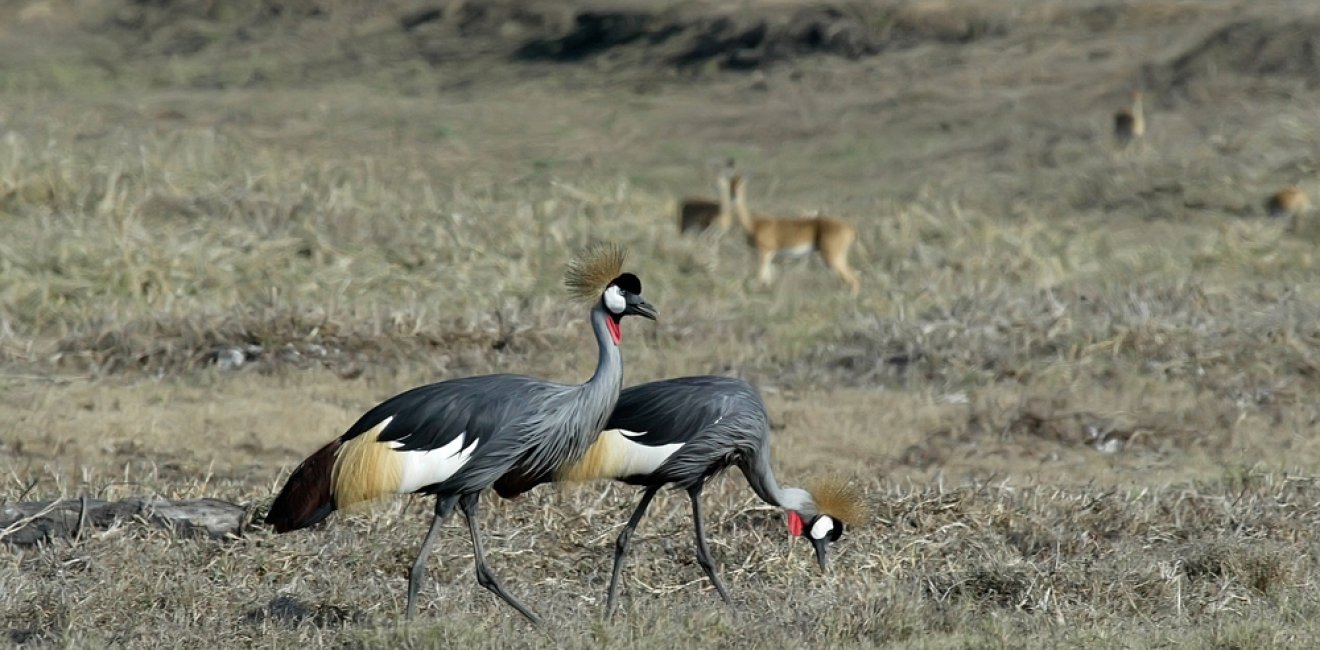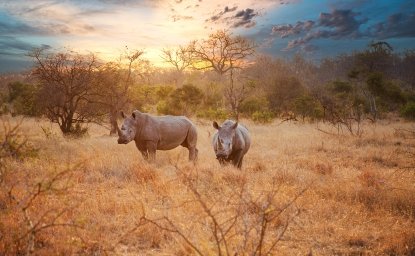
A blog of the Wilson Center

Ninety-five percent of the animals in Gorongosa National Park were destroyed in Mozambique’s civil war. Investments in the people and the communities surrounding the park are bringing the wildlife back—102,000 animals at last count.
Rewilding is an approach to conservation that emphasizes restoring an ecosystem’s biodiversity and overall health to that which existed before human disruptions. It often involves reintroducing native plant and animal species alongside suppressing harmful invasive plants and animals. Mozambique’s Gorongosa National Park has been called “Africa’s most successful rewilding effort.” Ironically, it’s the investments made in the people and communities that are key to that success being sustained.
Gorongosa sits at the southernmost point of Africa’s Great Rift Valley, and has been long recognized as one of the world’s natural treasures. Established as a hunting reserve in 1920 by Mozambique’s Portuguese rulers and designated a national park in 1960, it once drew visitors from around the world, including celebrities like John Wayne and Gregory Peck. An 1969 aerial survey of the park conducted by ecologist Dr. Kenneth Tinley counted approximately 200 lions, 2,200 elephants, 14,000 buffaloes, 5,500 wildebeest, 3,500 hippos, and vast herds of eland, sable, hartebeest, and other antelope.
However, large swaths of the Gorongosa ecosystem were engulfed in the Mozambican civil war that erupted in 1977—a war which caused nearly a million deaths, and the forced displacement of millions more. Fighters often took refuge in the park, killing vast quantities of animals for food, or for money; selling items like elephant tusks helped finance their operations. The war’s end only brought partial relief to Gorongosa as economic fallout and ongoing political instability left the area vulnerable to poachers. By 2001, the wildebeest population had dropped from 5,500 to 1, hippos declined from 3,500 to 44, and both elephant herds and lion prides were reduced by 90%.
Gorongosa’s fortunes finally took a turn for the better when, in 2004, the park captured the attention (and the heart) of American entrepreneur and philanthropist Greg Carr. He dedicated himself to restoring Gorongosa to its prewar glory through a 20-year contract between his nonprofit (the Greg Carr Foundation, or GCF) and the Government of Mozambique. Informed by Dr. Tinley’s research and analysis on Gorongosa’s diverse ecosystem, the GCF’s restoration efforts began with the reintroduction of herbivores like buffaloes and wildebeests. Once the herbivore population was large enough, leopards, hyenas, and other carnivores were reintroduced.
Signs of the ecosystem’s renewal are everywhere. There are 800 to 1,000 elephants in the park again, more than 63,000 waterbucks, 1,525 wildebeest, and 964 hippos. Absent from Mozambique for more than a quarter century, 14 painted wolves were introduced to Gorongosa in 2018, and just one year later a park survey had the number at 40.
But as impressive as the rewilding efforts have been for the wildlife, it is the investments in the area’s people that GCF believes will optimize the overall project’s chances of success. Like much of Africa, Mozambique is young and in need of sufficient economic opportunities for increasing numbers of citizens entering the workforce. More than half of Mozambicans (52%) are under the age of 18, and 61.9% of the population is multi-dimensionally poor. It can be hard to enlist local citizens in restoration and biodiversity efforts if they are preoccupied with providing for their families and future. That’s where the Sustainable Development Zone (SDZ) around Gorongosa’s perimeter—a key part of the agreement between GCF and the government—comes in.
“The Gorongosa Project” is now the largest employer in central Mozambique. In addition to traditional conservation operations, a growing number of Mozambicans have jobs with innovative SDZ projects that both pay good salaries and incentivize ecosystem preservation. This includes a new rainforest coffee operation on the slopes of Mt. Gorongosa. Rainforest coffee requires 50% shade—meaning that forest areas once cut down to open spaces for subsistence farming are being restored and protected. Our Gorongosa Coffee, featuring blends like Girls Run the World, is now sold in Europe, the US, and elsewhere. More than 250,000 indigenous tree seedlings have been planted, and 150 tons of coffee cherries—the fruit that holds the coffee bean—harvested. The GCF has also launched a project to grow (and eventually locally process) cashews. It distributed 92,023 cashews seedlings last year alone.
The GCF has also invested in educational opportunities for the area’s young people, training 600 public school teachers from the area’s 89 primary schools, and establishing 92 after school clubs. Gorongosa has also partnered with the Howard Hughes Medical Institute to create Mozambique’s first master’s program in Conservation Biology, and the only master’s program in the world conducted entirely inside a national park. It’s partnering with universities like Princeton and Oxford to bring research scientists to Gorongosa through an initiative that will also provide internship and employment opportunities for the area’s young people. The park has also created Africa’s first park ranger training program specifically for girls and women, and was the first Mozambican park to employ female rangers, pledging to have women represent 50% of their workforce by the year 2030.
Yes, Gorongosa is a remarkable rewilding success story. A 2022 aerial survey of just over 60% of the park reported the presence of over 100,000 large mammals. For many people, the notion of rewilding means reclaiming areas from human activities. In the case of Gorongosa, however, rewilding is succeeding because people are present, and fully invested in the restoration and protection of one of the world’s great natural treasures. Wildlife and human life, side by side.
Author

Explore More in Stubborn Things
Browse Stubborn Things
Spying on Poachers

China and the Chocolate Factory

India: Economic Growth, Environmental Realities
